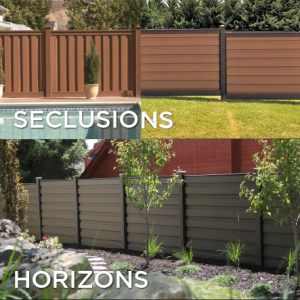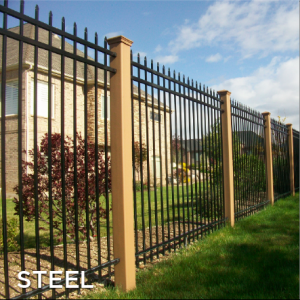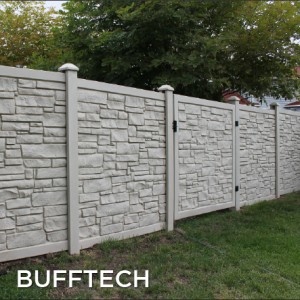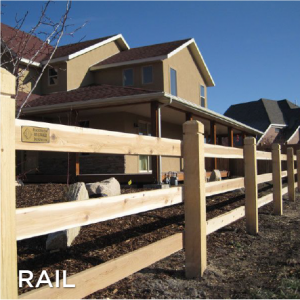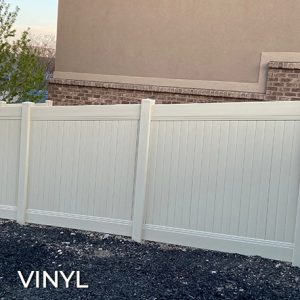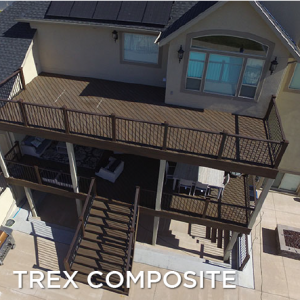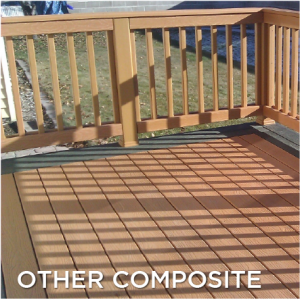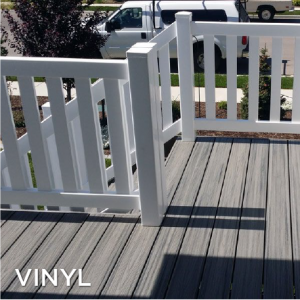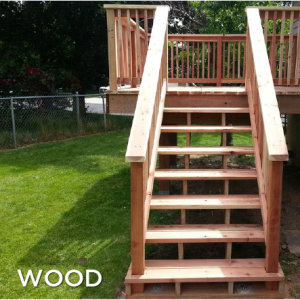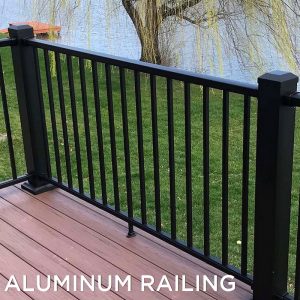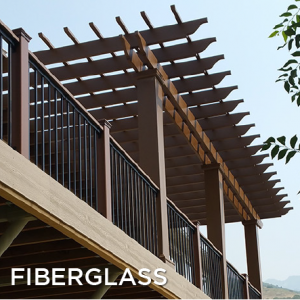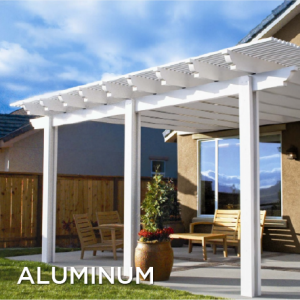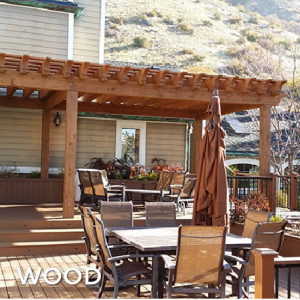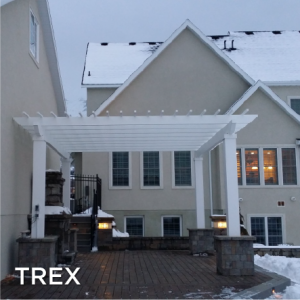Draper Cedar Fence Materials and Installation
Cedar fences are a popular choice for homeowners due to their durability, aesthetic appeal, and low maintenance requirements. If you’re considering installing a cedar fence in your Draper home, it’s important to understand the various materials and the installation process involved.
Understanding Cedar as a Fencing Material
Cedar is an excellent choice for fencing due to its natural properties. It has a high resistance to decay, rot, and insect infestation, making it extremely durable. Additionally, cedar has a unique grain pattern and rich color that adds to the overall aesthetic appeal of the fence.
When it comes to choosing the right material for your fence, durability is a key factor to consider. Cedar, with its exceptional resistance to decay and rot, is known for its longevity. This means that you can trust a cedar fence to withstand the test of time, even in harsh weather conditions. Whether you live in an area with scorching heat or freezing cold temperatures, cedar will remain strong and intact, without warping or cracking.
Not only is cedar highly durable, but it also offers a natural beauty that is hard to match. The warm tones and distinct grain patterns of cedar give fences a timeless and attractive appearance. Whether you prefer a rustic or modern style, a cedar fence can effortlessly enhance the overall curb appeal of your property. Its natural elegance adds a touch of sophistication to any landscape, making it a popular choice among homeowners and designers alike.
One of the great advantages of cedar fences is their low maintenance requirements. Unlike other materials, cedar does not need to be painted or stained to maintain its natural beauty. This not only saves you time and effort but also allows the wood to age gracefully, developing a charming patina over time. However, regular cleaning and sealing are recommended to keep the fence looking its best. With minimal maintenance, you can enjoy the beauty and functionality of a cedar fence for years to come.
In addition to its durability and aesthetic appeal, cedar is also an environmentally friendly choice for fencing. It is a renewable resource, as cedar trees can be sustainably harvested. By choosing cedar, you are contributing to the preservation of our forests and reducing the demand for non-renewable materials.
When installing a cedar fence, it is important to consider the specific needs of your property. Whether you are looking for privacy, security, or simply a decorative element, cedar can be customized to meet your requirements. With its versatility and natural charm, cedar is truly a versatile fencing material that can enhance any outdoor space.
Components of a Cedar Fence
A cedar fence consists of several components that work together to create a sturdy and functional barrier around your property.
Posts and Rails
The posts and rails form the structural framework of the fence. Cedar posts are typically set deep into the ground for stability, while the rails connect the posts and provide support for the fence panels.
When it comes to choosing the right cedar posts for your fence, it’s important to consider the size and spacing. The posts should be thick enough to withstand the pressure and weight of the fence panels, ensuring the overall stability of the fence. Additionally, the spacing between the posts should be carefully calculated to ensure that the fence remains strong and secure.
Furthermore, the installation of the posts requires careful planning and precision. The posts need to be set at the correct depth to ensure they are firmly anchored in the ground. This involves digging deep holes and using concrete or gravel to secure the posts in place. By taking the time to properly install the posts, you can ensure that your cedar fence will stand the test of time.
Fence Panels
The fence panels are the main visible part of the fence. They are typically made of cedar boards that are either overlapping or spaced apart for a desired level of privacy. Fence panels can be customized to suit your specific preferences and needs.
When it comes to choosing the style and design of your fence panels, there are various options to consider. Overlapping cedar boards provide a solid and private barrier, perfect for creating a secluded outdoor space. On the other hand, spaced-apart cedar boards allow for airflow and visibility, making them ideal for open and airy environments.
Additionally, the height of the fence panels can be customized to meet your specific needs. Whether you’re looking for a low picket fence to add a touch of charm to your front yard or a tall privacy fence to create a secluded backyard oasis, cedar fence panels can be tailored to suit your desired height.
Hardware and Accessories
Various hardware and accessories are used to secure the fence panels to the posts and add functional elements to the fence. This includes screws, nails, gate hinges, latches, and decorative accents. Choosing quality hardware ensures the longevity and proper functioning of your cedar fence.
When it comes to selecting the hardware for your cedar fence, it’s important to choose materials that are resistant to rust and corrosion. This ensures that your fence remains secure and functional, even in harsh weather conditions. Stainless steel screws and nails are a popular choice for their durability and resistance to rust.
In addition to the functional hardware, there are also various decorative accents that can be added to enhance the aesthetic appeal of your cedar fence. From ornamental gate hinges to decorative post caps, these accessories can add a touch of elegance and personality to your fence.
Furthermore, the installation of the hardware requires careful attention to detail. Properly aligning the gate hinges and latches ensures smooth operation and prevents sagging or misalignment. Taking the time to install the hardware correctly will not only enhance the overall appearance of your cedar fence but also contribute to its functionality and longevity.
The Installation Process of a Cedar Fence
Installing a cedar fence requires careful planning and execution to ensure a durable and visually appealing result.
Pre-Installation Preparation
Before starting the installation, it’s essential to mark the fence line and clear any obstacles or vegetation that may interfere with the process. It’s also important to check with local authorities or homeowner associations for any specific regulations or permits required.
Setting the Posts
The first step in installing a cedar fence is to set the posts. This involves digging holes, placing the posts, and securing them with concrete or gravel. Proper alignment and spacing of the posts are crucial for a stable fence structure.
Attaching the Panels
Once the posts are set, the fence panels can be attached. This involves securing the panels to the rails using screws or nails. It’s important to ensure that the panels are level and properly aligned to achieve a visually pleasing result.
Cost Factors in Cedar Fence Installation
When planning to install a cedar fence, it’s essential to consider the various cost factors involved.
Material Costs
The cost of cedar fencing materials can vary depending on the quality and thickness of the wood. Higher-quality cedar will generally be more expensive but can offer better longevity and aesthetics in the long run.
Labor Costs
The installation of a cedar fence typically requires professional expertise. Labor costs will depend on factors such as the size of the fence, the complexity of the installation, and the local labor rates. Obtaining quotes from reputable contractors can help determine the labor costs involved.
Additional Cost Considerations
Other factors to consider include permits, site preparation, removal of existing fences or vegetation, and the cost of any necessary equipment or tools. It’s important to budget for these additional costs to ensure a smooth and successful cedar fence installation.
By understanding the durability, aesthetic appeal, maintenance requirements, components, installation process, and cost factors of cedar fences, you can make informed decisions when planning your Draper home’s fence. A well-maintained cedar fence not only enhances your property’s security and privacy but also adds value and beauty to your outdoor space.
